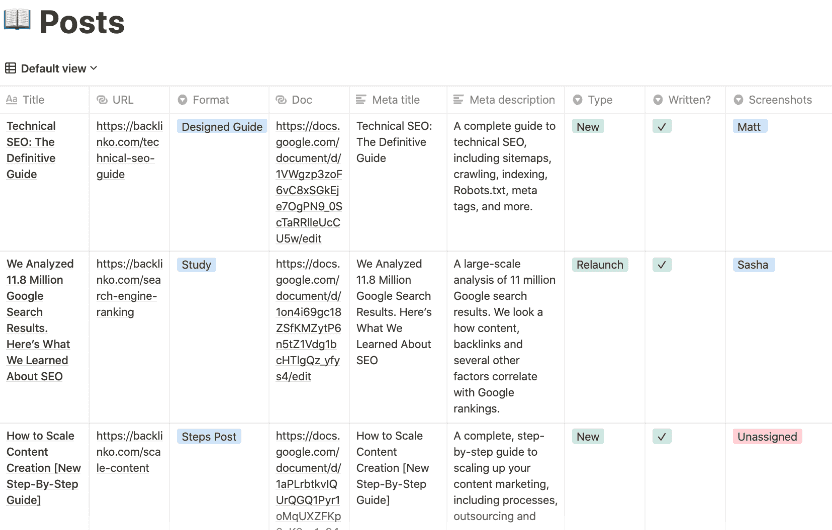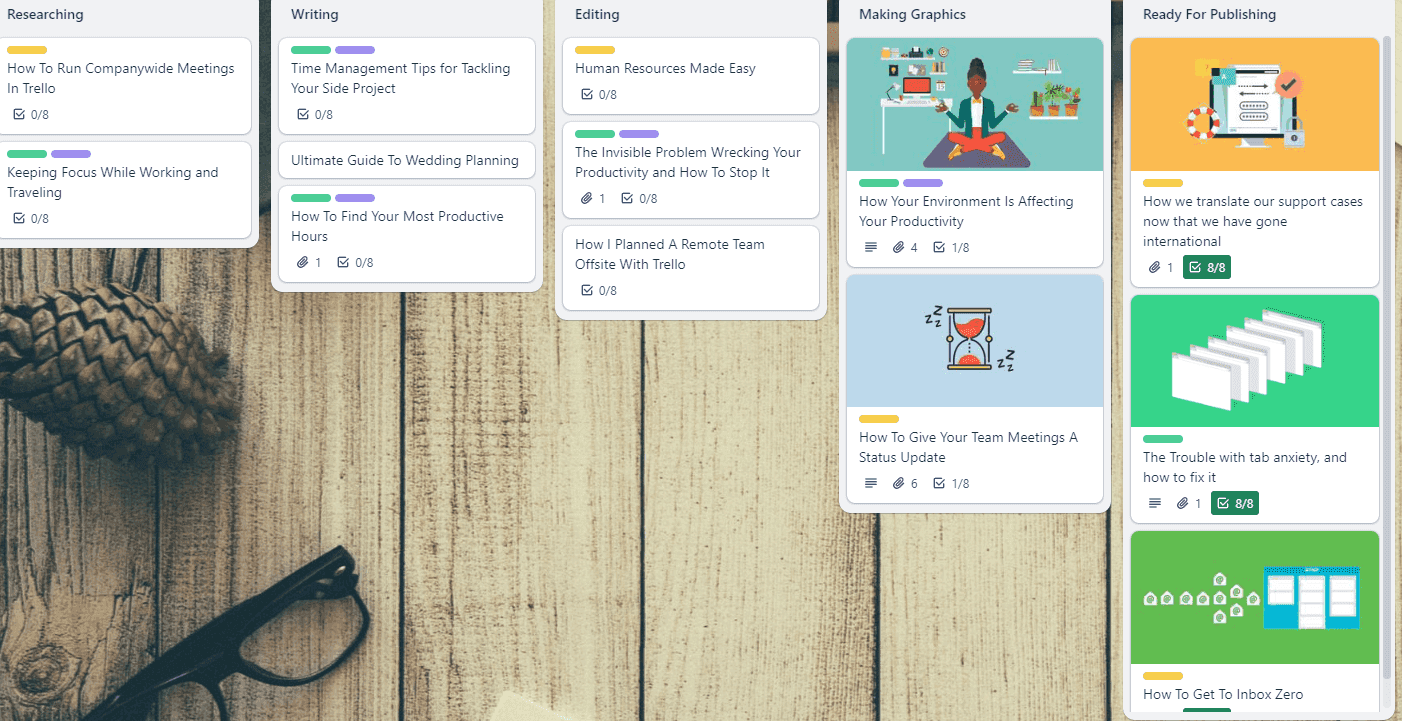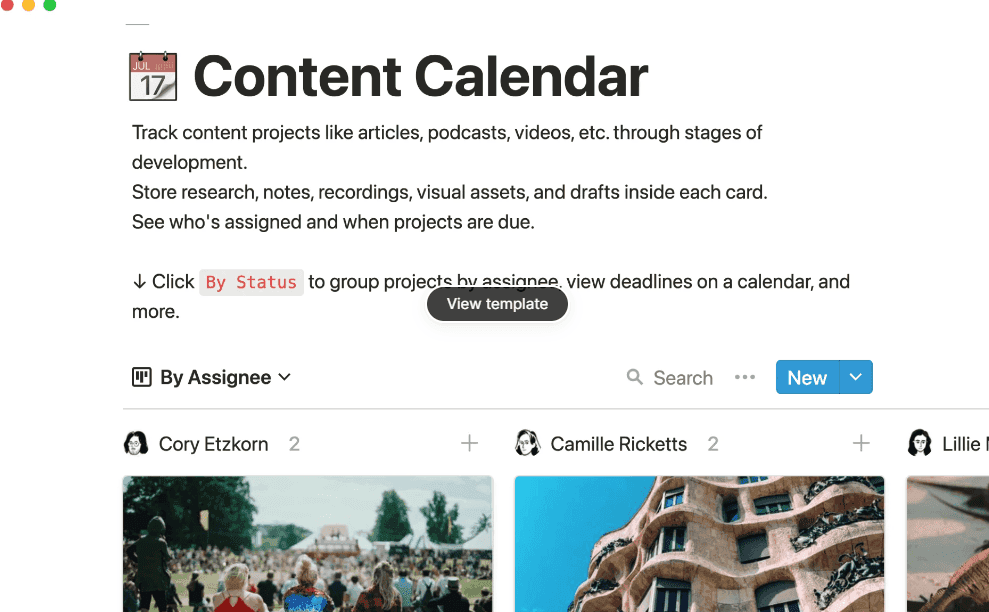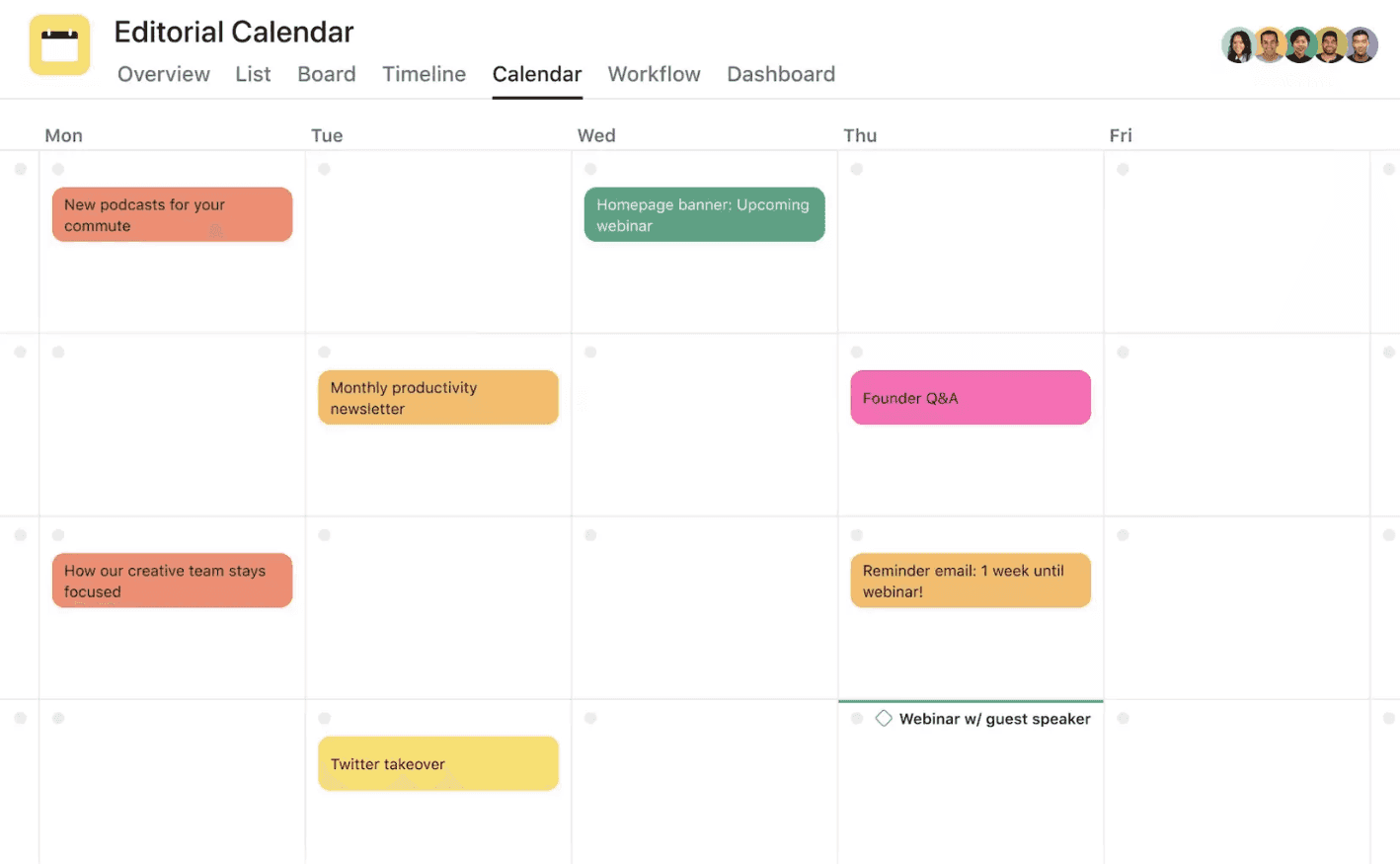6 Steps to Create a Content Calendar (+ Tools and Templates)
Last updated on Wednesday, December 20, 2023

With over 7.5 million blog posts published per day in 2023, it's quite easy for your website to get lost in the vast ocean of data on the internet.
So, how can you stand out from the crowd?
One of the best ways to ensure that your content gets noticed is by creating a well-planned content calendar.
It can help you plan, keep track of important events and dates, collaborate with other creators or team members, and provide a birds-eye view of all your content in one place.
To build one, follow these six simple steps.
What is a Content Calendar?
A content calendar (also known as an editorial calendar) is a tool used by creators, bloggers, businesses, and organizations to plan and schedule their content in advance.
It is usually a document (digital or physical) that allows you to organize your marketing efforts systematically.
A well-structured content calendar includes important dates, topics, keywords, promotions, and other necessary details required for creating and publishing content.

Source: Backlinko
Why is it Important?
Improves Efficiency: A content calendar helps you stay organized and save time by planning your content. It also ensures that you don't miss any important dates or events.
Enhances Consistency: By having a plan in place, you can publish content consistently and at regular intervals, which is essential for building a loyal audience.
Facilitates Collaboration: If you are working with a team or multiple creators, a content calendar can help everyone stay on the same page and coordinate their efforts effectively.
Better Analysis: By tracking your past content through the calendar, you can analyze what worked and what didn't, and use those insights to improve your future content.
How to Create a Content Calendar: 6 Steps
Here are six practical steps to create a content calendar:
Understand Your Goals
Choose a Template (Using Tools)
Select Your Channels
Build Guidelines and a Content Workflow
Plan and Schedule Your Content
Monitor Your Results
Step 1: Understand Your Goals
To define your goals and objectives, you should first answer specific questions like:
What are you trying to achieve with your content?
Do you want to increase website traffic, generate leads, or build brand awareness?
Who is your target audience, and where do they hang out?
What is the tone and style of your content?
How will you measure success for your goals?
Once you have a clear understanding of your goals, you can start creating a plan to achieve them. This might include conducting research on your target audience, identifying key messaging points, and setting realistic timelines.
It's also important to consider any potential challenges or obstacles that may arise in reaching your goals. These could include budget constraints, competition, or changes in the market.
For example, if your goal is to increase website traffic, you may need to consider search engine optimization strategies or incorporating social media promotions into your content plan.
It's essential to constantly evaluate and adjust your goals as needed. As you continue to create and distribute content, keep track of the metrics that matter most to you and make changes accordingly. This will help ensure that your efforts are aligned with your overall business objectives.
Step 2: Choose a Template (Using Tools)
Your content calendar can be as simple or complex as you want it to be. You can use tools like Google Sheets, Trello, Asana, Notion, or even a WordPress plugin to help you create one.
But first, here are a few things to consider when choosing a template:
Ease of Use: Your calendar should be easy to navigate and update regularly, even if you are working with a team.
Customizability: Choose a template that allows you to add or remove columns and fields based on your specific needs.
Integration Options: If you use tools like Google Analytics, Mailchimp, or Buffer, make sure the template can integrate with them for better analysis.
Accessibility: Your content calendar should be accessible to everyone involved in the content creation process.
Collaboration: If you are working with a team, choose a template that allows for real-time collaboration and updates.
Color Coding: Consider using different colors to represent different types of content or stages in the content creation process. This can make your calendar more visually appealing and easier to understand.
Mobile Friendly: In today's world, it's important to have access to your content calendar on the go. Make sure the template you choose is mobile-friendly or has a corresponding app.
Cost: Some tools may require a subscription fee, so consider your budget when choosing a template.
With this in mind, if you are a solopreneur, the best free tools you can use are:
Google Sheets
WordPress Editorial Calendar Plugin
Google Sheets
Google Sheets is a simple and free tool that allows you to create and share spreadsheets online.
You can easily set up your content calendar using the pre-made templates or customize your own.
Google Sheets also allows for real-time collaboration, making it easy to work with a team.
WordPress Editorial Calendar Plugin
If you use WordPress as your content management system, the Editorial Calendar Plugin is a great option.

It allows you to plan and schedule your blog posts directly on your WordPress site, making it easy to keep track of your content schedule.
On the other hand, if you have a business and you have a team of content creators, you should use one of the following options:
Trello (+ template)
Notion (+ template)
Asana (+ template)
Trello
Trello is a visual project management tool that uses boards, cards, and lists to organize tasks and projects.
You can easily create a content calendar using the drag-and-drop interface, based on this template.

It also allows for real-time collaboration and integrations with other tools. Trello offers a free version, as well as paid options with additional features.
Notion
Notion is a powerful all-in-one workspace that can be used for project management, note-taking, and more. It also offers customizable templates, including this content calendar template.

Notion allows for real-time collaboration, integrations with other tools, and a mobile app. It offers a free version, as well as paid options with more features.
Asana
Asana is another popular project management tool that also offers a content calendar template to help you plan and organize your content.
Based on this template, you can easily schedule and assign tasks to your team, track progress, and manage deadlines.

Like the other options, Asana allows for real-time collaboration and integrations with various tools. It offers a free version, as well as paid options with more features.
Step 3: Select Your Channels
Once you have your goals, template, and tools in place, the next step is to decide on the channels and topics for your content.
This will depend on where your target audience spends their time online. For example, if your target audience is on Instagram, you may want to focus on creating visually appealing content for that platform.
Some common channels for content distribution include:
Blog
Social Media (Facebook, Instagram, Twitter, LinkedIn, TikTok)
Email Marketing
YouTube
Podcasts
Make sure to choose channels that align with your goals and where your target audience is most active. It's also important to consider the types of content that perform well on each channel.
Step 4: Build Guidelines and a Content Workflow
To ensure consistency and quality in your content, it's essential to have guidelines and a well-defined workflow in place. This also makes it easier for new team members to get up to speed quickly.
Your guidelines should cover:
Brand voice and tone
Editorial style (grammar, punctuation, etc.)
Visual style (fonts, colors, imagery)
Content formatting (headings, subheadings, bullet points)
Your content workflow should outline the steps and responsibilities for each stage of the content creation process, such as ideation, writing, editing, and publishing. This helps to ensure that everyone is on the same page and reduces the chances of errors or delays.
Step 5: Plan and Schedule Your Content
Now that you have all the necessary components in place, it's time to start planning and scheduling your content.
Use your content calendar template to map out your ideas, topics, channels, and deadlines.
Consider using a mix of evergreen and timely content to keep your audience engaged. You can also plan for seasonal or holiday-themed content to stay relevant throughout the year.
For example, if your business is about investing and financial programs, you may want to plan for tax-related content during the tax season.
Make sure to leave room for flexibility and adjustments in your schedule as needed.
Step 6: Monitor Your Results and Make Adjustments
Finally, it's important to regularly monitor the performance of your content and make adjustments as needed. This could include analyzing engagement metrics, conducting surveys or polls with your audience, and keeping an eye on industry trends.
By doing this, you can gain insights into what is working well and what may need to be improved.
Some important metrics to track could include:
Click-through rates
Conversion rates
Time spent on page
Bounce rate
Social media engagement
In addition to monitoring these metrics, it's also important to actively seek feedback from your audience. This can help you understand their needs and preferences, as well as identify any areas where your content may be falling short. You can use this feedback to make adjustments and improvements to your content strategy.
It's also important to stay updated on industry trends and changes in consumer behavior. By staying informed, you can adapt your content strategy accordingly and ensure that your content remains relevant and effective.
Takeaways
Creating a content calendar can help you stay organized, consistent, and on track with your content marketing efforts.
By following these steps and utilizing tools and templates, you can effectively plan and schedule your content while also monitoring its performance and making necessary adjustments.
Remember to always prioritize your audience's needs and preferences when creating content, as this will ultimately drive engagement and success for your business.
So go ahead and start planning your content calendar today!

Article by:
Erik Emanuelli
Blogger
Erik Emanuelli has been in the online marketing game since 2010. He’s now sharing what he has learned on his website. Find more insights about SEO and blogging here.


